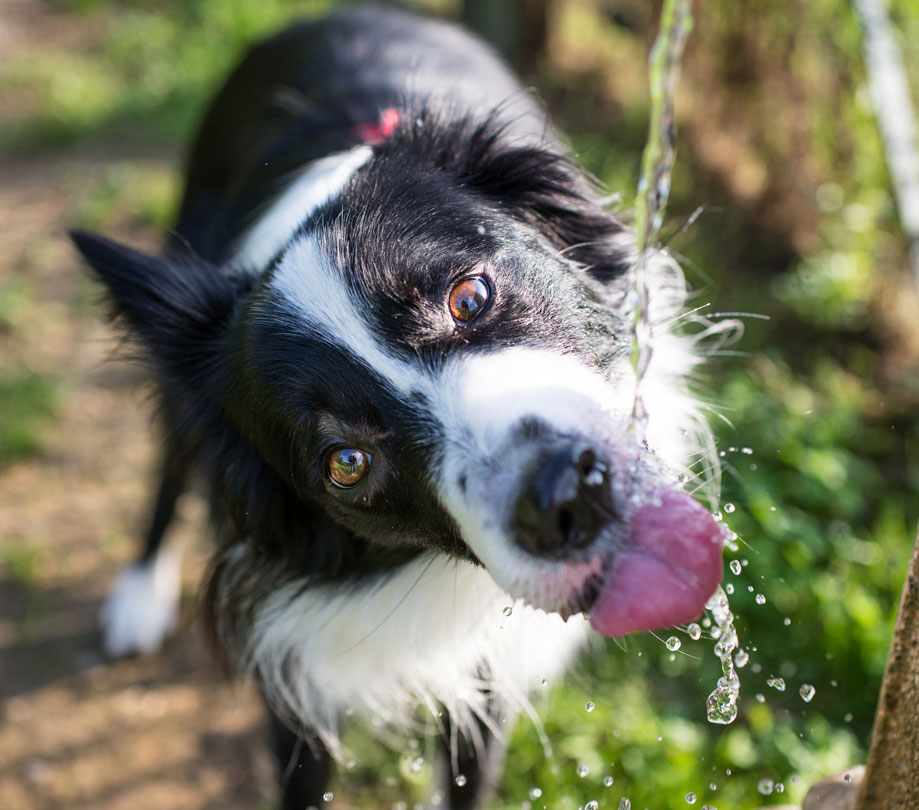Blog
July is national pet hydration awareness month and the best way to celebrate is through informing other pet owners about pet hydration, dehydration, and water intoxication.
Summer means hotter temperatures not just for us humans but for your fur babies as well, and so for the month of July, we’re celebrating National Pet Hydration Awareness Month! Here is everything you need to know about pet hydration, dehydration, water intoxication, and everything in between.
National Pet Hydration Awareness Month
While the human body consists of 55-60% water, your pet’s body actually consists more. Your pet is made up of 80% water. And because this is a fact that many pet owners do not know, many pets end up dehydrated. Not sure if your pet is properly hydrated? Here is a checklist to know if your fur baby is dehydrated.
1. Does your pet’s eyes look dry and sunken?
2. Does your pet vomit out of nowhere? Is your pet suffering from diarrhea, too?
3. Did your pet suddenly lose its appetite?
4. Is your pet suddenly dull and low on energy?
5. Does your pet appear to pant excessively?
6. Do the skin elasticity test. Gently pinch your pet’s skin between your thumb and forefinger. Take note that the skin will spring back into position in well-hydrated pets, while it takes longer in dehydrated pets.
7. Does your pet’s gums and nose appear dry?
8. Is your pet’s pee dark yellow and does your pet pee infrequently?
If you answer yes to most of the items in the checklist then your pet is dehydrated. The best way to deal with dehydration is to visit your veterinarian right away.
On the other hand, your fur baby may also suffer from water intoxication. As with everything, too much water can cause harm to your pet. Too much freshwater depletes the electrolytes that your pet’s body needs to survive. Too much saltwater, on the other hand, can cause an overdose of sodium that is fatal to your pet. Water intoxication often happens when your pet plays near water or when they consume too much water during playtime. Some examples are swimming and playing fetch at the beach, and playing with sprinklers or hoses. It can also happen when your pet has no access to clean water and it drinks from dirty water sources out of thirst and desperation.
Here are some signs of water intoxication that you need to look out for:
1. Vomiting large amounts of water
2. Excessive drooling
3. Bloating
4. Large pupils
5. Loss of coordination
6. Collapse
7. Breathing issues
8. Loss of consciousness
9. Seizures
If any of these symptoms are present in your pet, make sure to visit your vet right away.
So what is the right amount of hydration for your pet?
According to Petsafe, your pet needs 0.03 liters of water per pound of bodyweight to stay hydrated. While “reminding” your pets to stay hydrated may not be an option, encouraging your pets to drink or take in more water is possible. Here are some tips that you may want to consider:
1. Make sure that clean, freshwater is readily accessible to your pets. Having multiple water bowls around your house is even better.
2. Pet water fountain is preferred by some cats and dogs so you might want to consider this for your fur baby.
3. Wash the water bowls daily to avoid germ buildup and to keep diseases at bay.
4. Add ice cubes or small amounts of bone broth to entice your pet to drink more water
5. When your pet plays outside, make sure your pet has access to a shady area for it to cool off.
6. Don’t forget to bring fresh water when going out with your pet.
7. Add wet food to your pet’s diet or add water to its dry food. (QUICK TIP: You can go for prepackaged wet food. This one is 70% water!)
Always remember that just as you need to stay hydrated on a regular basis, your pet needs to be hydrated, too. So next time you reach out for that bottle of water, think of your dear pet.
The best way to celebrate National Pet Hydration Awareness Month is by keeping other pet owners informed, so share this with your fellow pet owners and let’s raise awareness!

